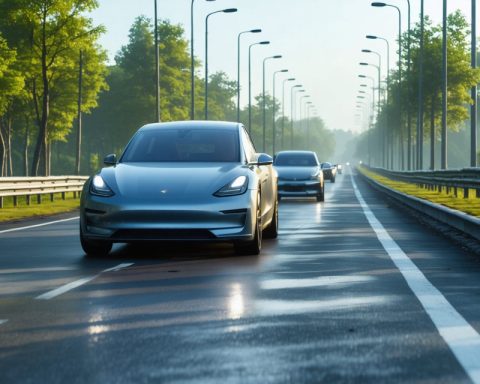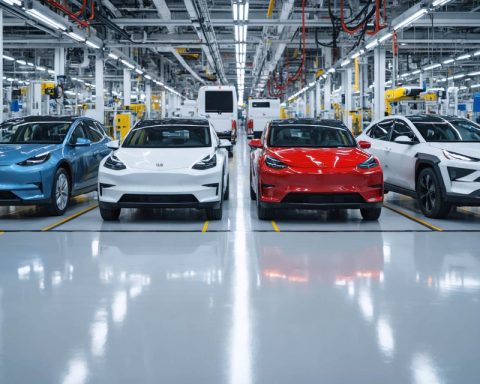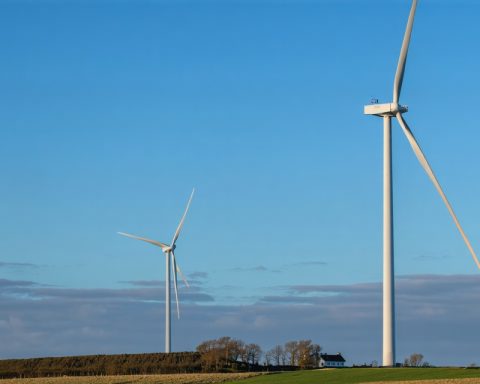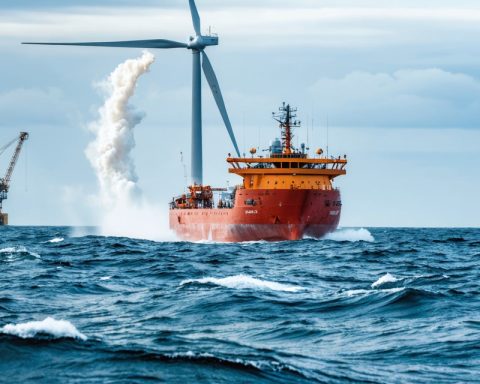- AltaSea in San Pedro is leading a transformation of Los Angeles’ waterfront into a vibrant “blue economy” hub.
- The initiative focuses on harnessing ocean potential, with projects like EcoWave, a renewable wave energy pilot backed by Shell Marine Renewable Energy.
- EcoWave aims to establish the U.S.’s first onshore wave energy project, potentially powering millions of homes with clean energy.
- The blue economy promises over 126,000 jobs, emphasizing economic empowerment and workforce development in emerging marine sectors.
- A report highlights the importance of collaboration between academia, private enterprises, and public programs to prepare the future workforce.
- AltaSea hosts prominent figures and institutions, becoming a center of marine innovation and collaboration.
- Los Angeles is setting a precedent for sustainable growth through urban and natural harmonization, offering a blueprint for other coastal cities.
Los Angeles’ bustling waterfront is on the brink of a transformation that could redefine its economic landscape. At the heart of this reinvention is AltaSea, a cutting-edge marine research campus in San Pedro, where ambition meets innovation to pave the way for a vibrant “blue economy.”
Under the spirited leadership of Terry Tamminen, AltaSea has become a beacon for marine-based technological advancements. The essence of this initiative: harnessing the ocean’s potential to fuel industries of tomorrow. From testing wave energy technologies to cultivating startups focused on sustainable aquaculture, the projects springing forth from AltaSea are setting a new standard for what is possible at the intersection of oceanography and entrepreneurship.
Earlier this year, a significant milestone unfolded with the launch of EcoWave, an ambitious pilot program at the Port of Los Angeles’ Outer Harbor. This Swedish innovation promises to turn ocean waves into a source of renewable electricity. With the sturdy backing of industry giant Shell Marine Renewable Energy, the project aims to demonstrate its prowess, positioning itself as the first onshore wave energy project in the U.S. Once operational, it could potentially power millions of homes, symbolizing a significant step toward clean energy solutions.
But what is truly revolutionary extends beyond individual projects; it’s the vision of what the blue economy stands to bring. With over 126,000 projected jobs and substantial contributions to LA County’s wage landscape, the blue economy isn’t just about innovation; it’s about economic empowerment. The emphasis is on cultivating a prepared workforce, eager to fill roles that bridge technological gaps and address future needs.
A newly unveiled report emphasizes actionable strategies for workforce development, zeroing in on the essential skills training needed to thrive in these emerging sectors. It reveals that seamless collaboration between academia, private enterprises, and public programs can close existing curriculum gaps, ensuring students are prepared for the challenges and opportunities that the blue economy will undoubtedly present.
As excitement builds, AltaSea stands as a symbol of hope and a hub for collaboration. Its 35-acre campus has become a melting pot of maritime innovators—hosting legends like Titanic discoverer Bob Ballard and educational behemoths like USC, UCLA, and Caltech, all weaving a tapestry of marine progress.
Through these efforts, AltaSea is not just transforming the Port of Los Angeles but is setting a precedent that other coastal cities will look to emulate. In essence, it is redefining how urban centers can harmonize with their natural surroundings to produce sustainable growth that benefits future generations.
In this unfolding narrative, the blue economy isn’t a distant dream but a dawning reality. The story being written on the LA waterfront is one of innovation, collaboration, and limitless potential—where the ocean is not just a backdrop but a partner in the journey toward a brighter, more sustainable future.
Discover the Future: How LA’s Port Transformation is Pioneering the Blue Economy
Introduction
The dynamic transformation of Los Angeles’ waterfront holds the potential to revolutionize both the city’s economy and the future of sustainable industry. A focal point of this transformation is AltaSea, a progressive marine research center located in San Pedro. This cutting-edge campus is redefining what it means to align ecological practices with economic growth, thereby setting the stage for the burgeoning “blue economy.”
The Vision of AltaSea
At the heart of the blue economy is AltaSea, led by the visionary Terry Tamminen. This initiative aims to harness the boundless resources of the ocean to drive technological innovation and create sustainable industries. With projects like EcoWave, supported by Shell Marine Renewable Energy, AltaSea is making strides in harnessing wave energy, which could power millions of homes across the U.S. Once operational, EcoWave promises to be a crucial step toward sustainable energy solutions, setting an example for other coastal regions.
Workforce Development: A Key Pillar
Addressing Skills Gaps
A critical component of the blue economy is workforce development. The shift toward ocean-based industries requires a workforce equipped with specific skills. Reports highlight the necessity for collaborative strategies that bridge the gap between academia and industry. This is crucial for developing curriculum and training programs that prepare students and workers for emerging jobs in these sectors.
Creating New Opportunities
The blue economy not only aims to advance technology but also to create an estimated 126,000 jobs in Los Angeles County. This economic empowerment is essential for uplifting the community and ensuring a sustainable future. The variety of roles expected in this sector, from marine research to sustainable aquaculture, underscore the diverse opportunities available.
Real-World Applications and Innovations
Marine Renewable Energy
The deployment of wave energy technologies like EcoWave illustrates the potential for renewable solutions in urban coastal areas. This initiative could serve as a model for other transformations in cities worldwide, demonstrating how natural resources can be used sustainably.
Sustainable Aquaculture
Startups within AltaSea are also exploring sustainable aquaculture practices, highlighting the possibilities of responsible food production methods that could support global food security challenges.
Market Forecasts and Industry Trends
The blue economy is forecasted to grow significantly, with increasing investments in renewable marine energy and sustainable practices. As described by the World Bank, the global market for blue economy initiatives is expecting accelerated expansion, driven by technological advancements and increasing environmental awareness.
Recommendations and Quick Tips
– Invest in Education and Training: As the blue economy grows, so should your skills. Consider educational programs that align with emerging ocean-based industries.
– Embrace Sustainability: Support and advocate for products and companies that prioritize sustainable practices.
– Stay Informed: Monitor developments in marine technology and renewable energy to understand market trends and investment opportunities.
Conclusion
AltaSea is at the forefront of a transformative movement toward a sustainable future. By prioritizing collaboration between industry leaders and educational institutions, Los Angeles sets a benchmark for coastal cities globally. The blue economy is not only a vision for tomorrow but a present-day opportunity to innovate and inspire.
For further information and updates on sustainable innovation, visit AltaSea. As the world shifts toward more sustainable practices, engaging with initiatives like this can empower communities and steer them toward prosperous, resilient futures.














